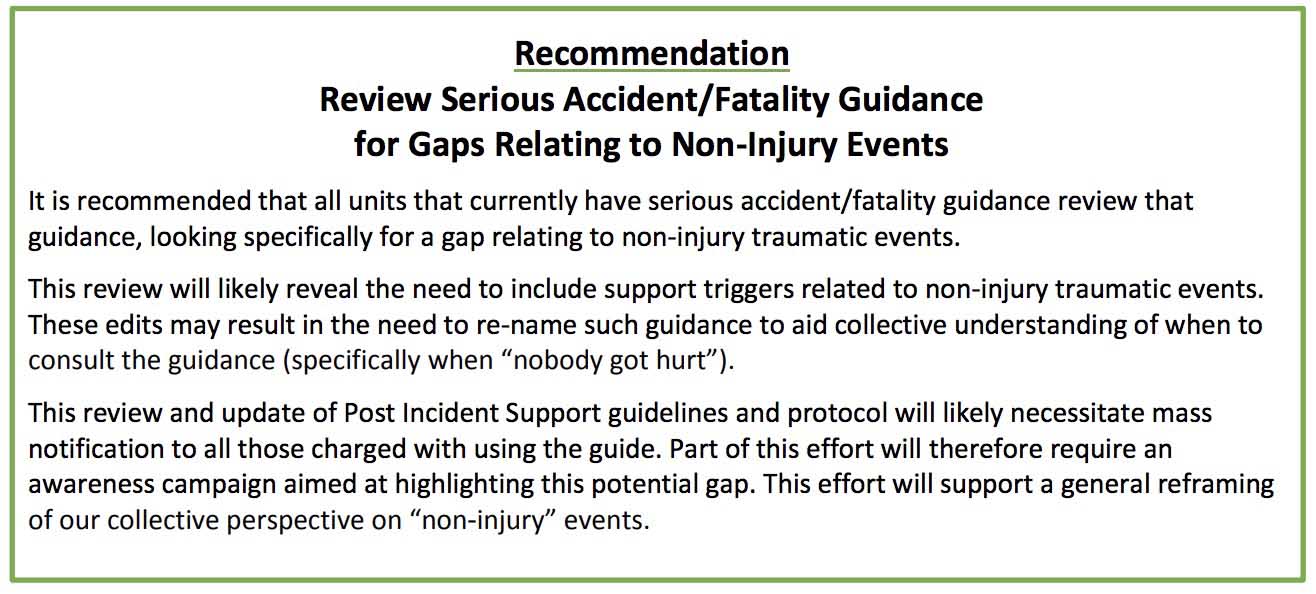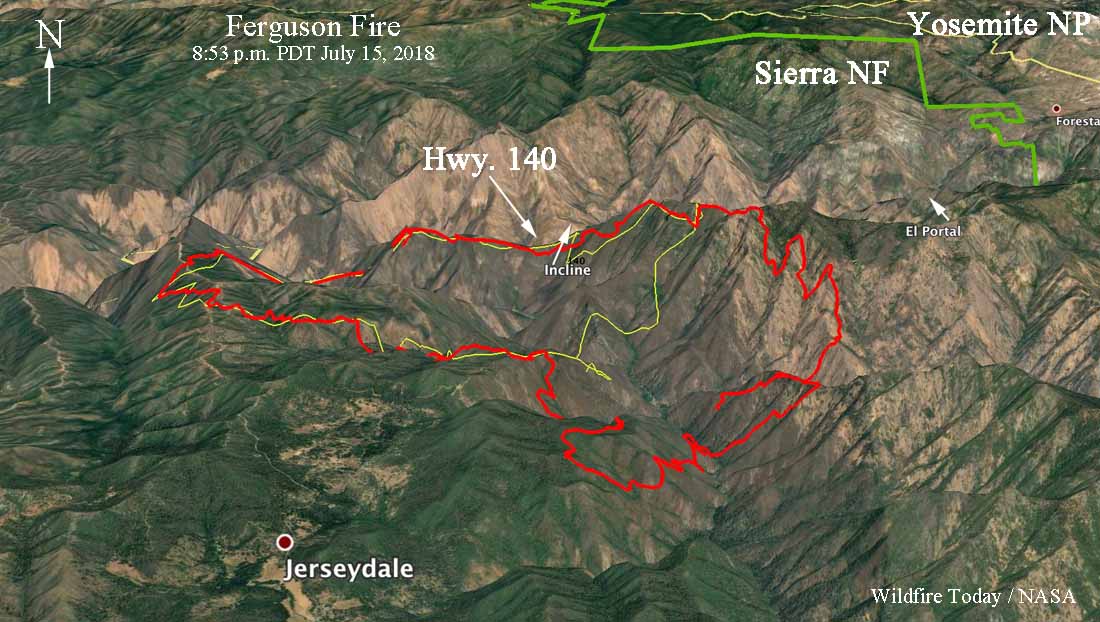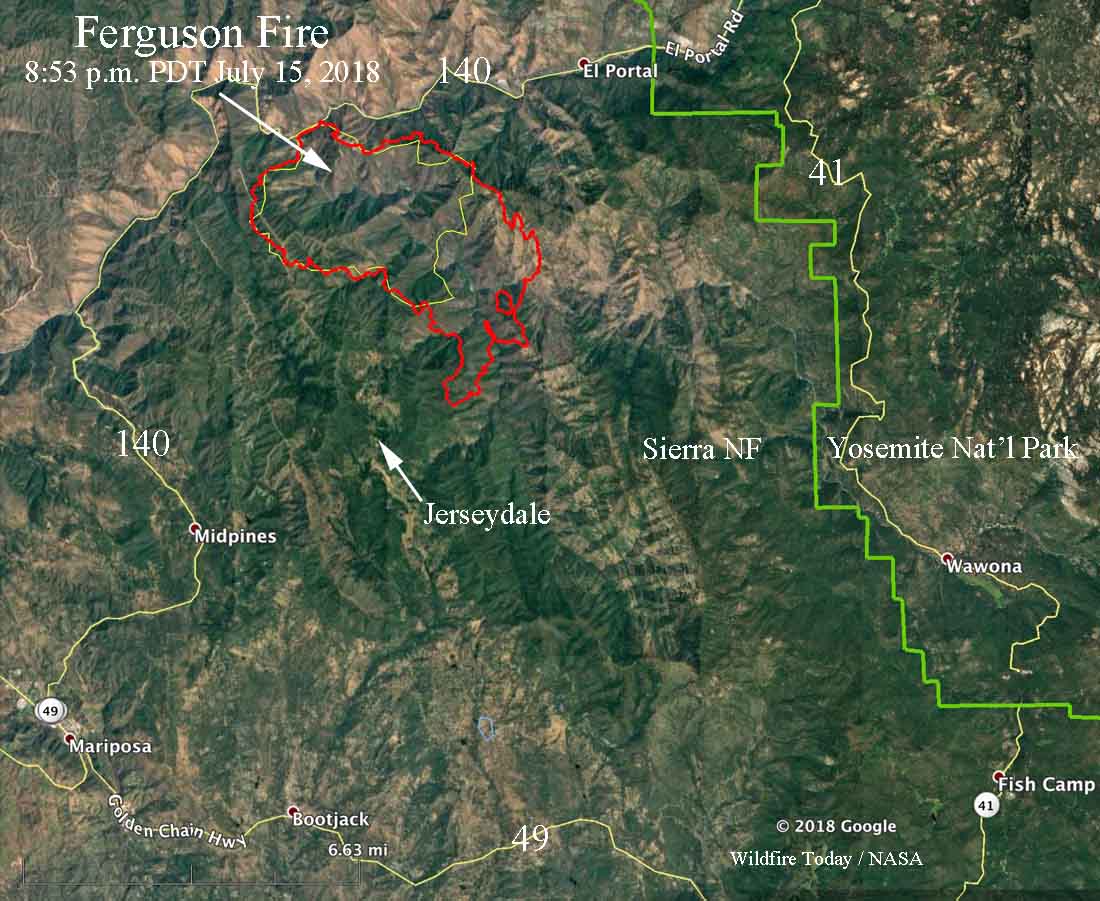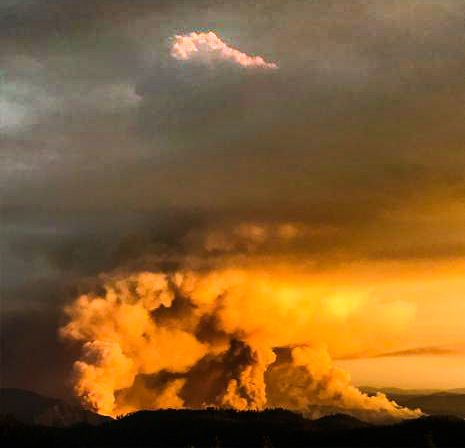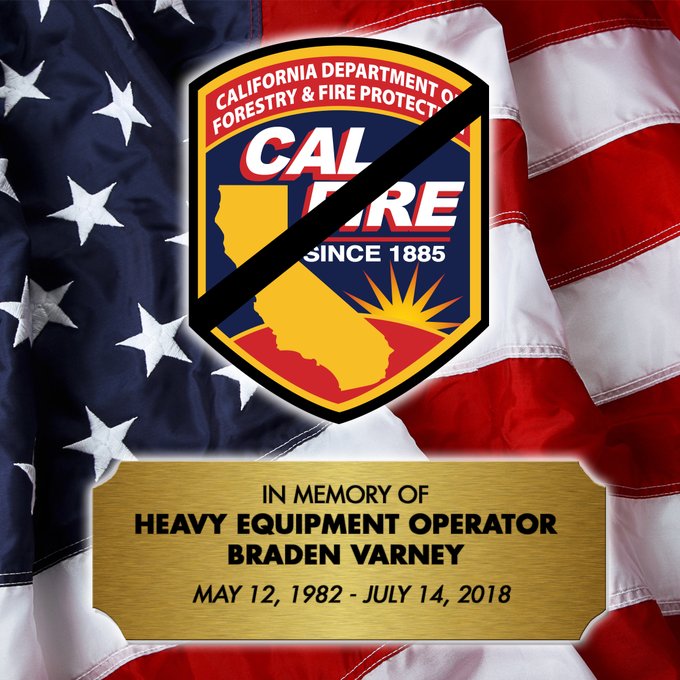Above: screenshot from the video below.
Chris Mackie posted this video on July 15, 2018 of spectacular fire behavior at a wildfire on the Arizona side of the Colorado River near Blythe, California. It is not uncommon to see dust devils and fire whirls during unstable weather conditions on a fire, but as you can see beginning at about 1:10 the rotating vortex over this fire intensifies into what some might call a fire tornado (or “firenado”) as trees are uprooted and debris is thrown into the water as it moves over the river (and transforms into a waterspout?).
We have written about similar phenomenons several times on Wildfire Today. Here is an excerpt from a 2016 article, “Defining fire whirls and fire tornados”:
“The news media sometimes calls any little fire whirl a “fire tornado, or even a “firenado”. We found out today that these and related terms (except for “firenado”) were, if not founded, at least documented and defined in 1978 by a researcher for the National Weather Service in Missoula, David W. Goens. He grouped fire whirls into four classes:
- Fire Devils. They are a natural part of fire turbulence with little influence on fire behavior or spread. They are usually on the order of 3 to 33 feet in diameter and have rotational velocities less than 22 MPH.
- Fire Whirls. A meld of the fire, topograph, and meteorological factors. These play a significant role in fire spread and hazard to control personnel. The average size of this class is usually 33 to 100 feet, with rotational velocities of 22 to 67 MPH.
- Fire Tornadoes. These systems begin to dominate the large scale fire dynamics. They lead to extreme hazard and control problems. In size, they average 100 to 1,000 feet in diameter and have rotational velocities up to 90 MPH.
- Fire Storm. Fire behavior is extremely violent. Diameters have been observed to be from 1,000 to 10,000 feet and winds estimated in excess of 110 MPH. This is a rare phenomenon and hopefully one that is so unlikely in the forest environment that it can be disregarded.”



